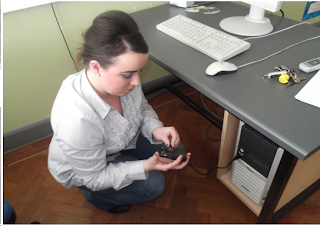Health and Safety steps when connecting to Peripherals
Printers
All printers should be examined, tested and checked thoroughly before being connected, these are the guidelines offered by the Institute of Electrical Engineers (IEE) and the Health and Safety Executive (HSE) and all sockets must also be switched off before inserting the plug. It is recommended that laser printers should be situated one metre away from were people are sitting.
Digital Camera’s
 You should connect and set up your digital camera in accordance to the instructions provided by the supplier or manufacturer and make sure that the computer is switched off at the electrical mains and the plugs have been removed from the socket before connecting the digital camera. You should also use and anti-static band this discharges any static that you may have in your body before you connect the digital camera.
You should connect and set up your digital camera in accordance to the instructions provided by the supplier or manufacturer and make sure that the computer is switched off at the electrical mains and the plugs have been removed from the socket before connecting the digital camera. You should also use and anti-static band this discharges any static that you may have in your body before you connect the digital camera.
Hard Drive















